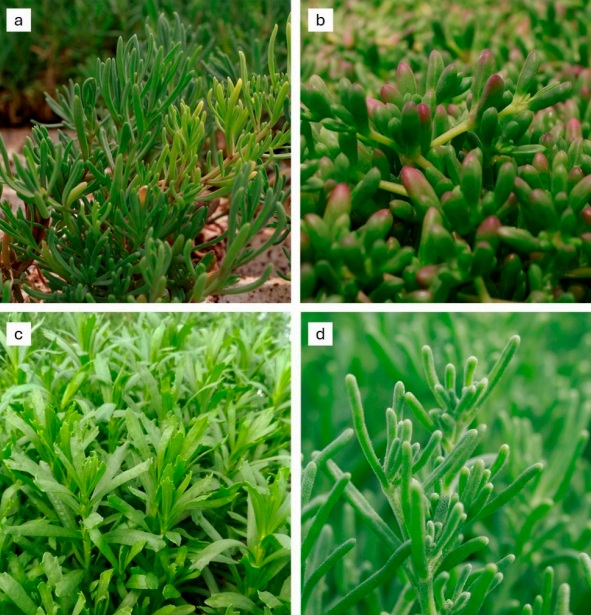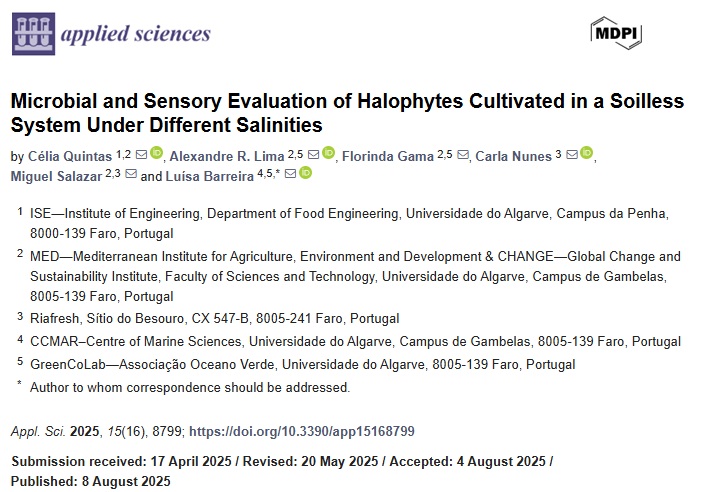

TITLE
Microbial and Sensory Evaluation of Halophytes Cultivated in a Soilless System Under Different Salinities
JOURNAL
Applied Sciences
AUTHORS
Célia Quintas, Alexandre R. Lima, Florinda Gama, Cara Nuunes, Miguel Salazar, Luisa Barreira
ABSTRACT
The increasing interest in halophytes as sustainable crops and their potential functional properties highlights the need to understand how cultivation conditions affect their quality for human consumption. The present study aimed to evaluate the influence of salinity on the microbial quality of the halophytes Disphyma crassifolium, Inula crithmoides, Mesembryanthemum nodiflorum, and Suaeda maritima, cultivated using a soilless system under different salinities. The sensorial quality of D. crassifolium and S. maritima was also assessed by an experienced panel of culinary chefs. The microbial quality was measured by counting aerobic microorganisms (30 °C and 6.5 °C), fungi, Escherichia coli, and coagulase-positive staphylococci. Salinity increase caused a concentration-dependent salt accumulation in the plants, triggering a rise in the microbial populations, namely aerobic and filamentous fungi on D. crassifolium and I. crithmoides and psychrotrophic microorganisms on S. maritima (p < 0.05). Except for M. nodiflorum, plants cultivated at the highest salinity (465 mM) had levels of filamentous fungi higher than 3 Log CFU/g. Concerning aerobes, plants presented a satisfactory microbiological quality (<6 Log CFU/g) even when cultivated at high salinity (465 mM), and yeasts, E. coli, and staphylococci were never detected. D. crassifolium and S. maritima cultivated at intermediate salinities were preferred by the sensory evaluation panel. In conclusion, soilless system cultivation produces plants adequate for consumption, considering their microbial and sensorial quality.



